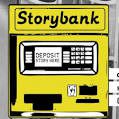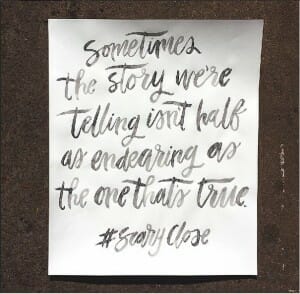 The judge shook his head in disbelief. Before him stood a bank robber, arrested for the fifth time. “Why do you do it?” he asked. “Why do you keep on robbing banks?”
The judge shook his head in disbelief. Before him stood a bank robber, arrested for the fifth time. “Why do you do it?” he asked. “Why do you keep on robbing banks?”
The robber looked at him in pity. “Because that’s where they keep the money!”
Where does your nonprofit keep its stories?
If you want to tell stories that will touch your donors’ hearts and move them to give money, you need a place to keep the stories. You need a story bank.
Collect Your Nonprofit Stories
You get to work in the morning and realize it’s time to send out an appeal letter. Naturally, since you know it will dramatically increase the number of people who read your letter and give, you want to include a story.
What do you do? Do you start emailing and leaving voicemail for your frontline staff? How long does it take for them to get back to you? How much of what you hear from them is actually a story (as versus a dry timeline)?
Collecting your stories as you go solves all these problems. When you need one, it’s right there–and you’ve already figured out the story arc that will make it stick in the reader’s mind.
What is a Storybank?
“A storybank is a mechanism for capturing and sharing stories in a variety of media,” says Wendy Levy of the National Alliance for Media Arts and Culture.
- Written–by the person who knows the story
- Oral–notes from the story’s source, or a recording of them telling it
- Photos
- Videos
- Quotable quotes
Elizabeth Prescott has good advice for how to start your story bank. Begin by
collecting the low-hanging fruit–those stories that your colleagues already know well and routinely share with each other (or with donors) to illustrate theimportance of what you do.
Tools to Have Stories at Your Fingertips
You could use tools specially designed for storybanking. Prescott likes TrackVia. Others have spoken well of Zahmoo or WuFoo. It’s certainly going to be helpful to be able to share the information you collect online, and no spreadsheet or word processing document can do that.
 The problem with new technology is that often, the people in your organization won’t use it.
The problem with new technology is that often, the people in your organization won’t use it.
Learning a new tool feels like one more thing to do, on top of a pile of things to do that’s large and constantly growing (in every nonprofit I know!).
So, you are probably better off using tools that are familiar to people in your organization. Do you have a shared Google Drive? Use that. How about a wiki, or a Dropbox? Use what people are used to.
If you have to, assign one person to be the address for the storybank and have everyone email their stories, photos, etc., to that person. It’s better to have a bank of stories that’s low-tech than not to collect those stories at all!
Tips for Banking Your Nonprofit Stories
- Think ahead about how you will use these stories. It’s possible to use them many different ways–and it’s a good idea! But if your sources can picture their stories–in print, or on your Facebook page, or on YouTube–they’re more likely to share them and shape them for an audience.
2. For each story, track dates, demographics and times used.
This tip comes again from Elizabeth Prescott, who says, “It may not seem as important when you only have a few stories, but the bigger your bank gets, the more you’ll wish that you had some good search terms so that you could find just the right person to speak about a particular topic or from the perspective of a particular social group.”
3. Make sure you have permission to use names and photos. Having a standard release form for people to sign is a good idea. In your story bank, keep notes (or copies) of the permission given. Even then, though, double-check. It’s better to use a slightly less vivid story than to make a client or a supporter feel bad about your organization.
You be the judge. Is storybanking right for your organization?

